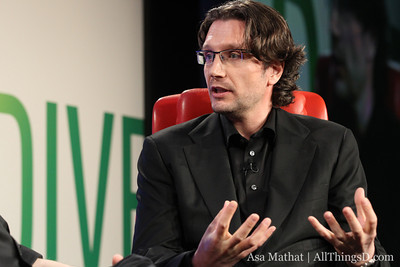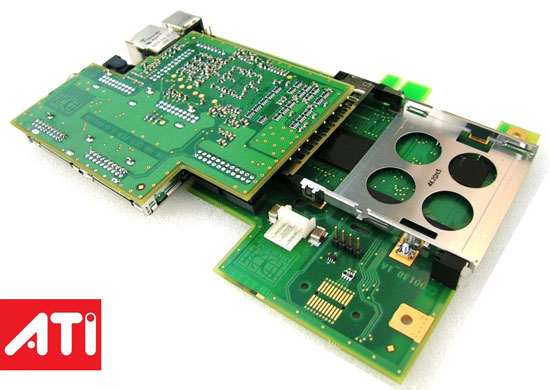Anand's Thoughts on Intel's TV Initiative
by Anand Lal Shimpi on February 14, 2013 4:21 PM ESTEarlier this week Intel announced what we'd heard rumors of in months past, that it would be creating an IPTV service along with a custom software and hardware platform to deliver it direct to consumers. A few hours after the announcement, I had the opportunity to speak with Erik Huggers, formerly of the BBC and currently heading up Intel's new Media division.

For years Intel has tried to grab a slice of the TV business. Remember the Intel CE series of Atom based SoCs? How about Sandy Bridge's Intel Insider technology? Both of these were focused attempts to solve problems within the TV industry, but both ultimately went no where. Intel's solutions thus far have been too narrow in scope to do anything.
The TV today reminds me a lot of smartphones in the early 2000s. There's tons of potential, but largely ruined by slow hardware, kludgy user interfaces and heavy fragmentation both on the content side and on the cross platform compatibility side. Much like the smartphone, the solution to revolutionizing the TV as a platform is unlikely to come from within the existing market. And just like the smartphone revolution, a disruptive solution here may very well come from a computing company.
What Is It?
At a high level Intel's unnamed TV play seems to work like this. Intel negotiates deals with content providers, said content lives on a server farm somewhere (likely running tons of Xeons courtesy of mother Intel). Using a box that Intel will sell you, you'll get access to this content over the Internet. The box will run an OS and software layer both developed by Intel. The content will include live TV, traditionally only available via a cable TV subscription. The box Intel will sell you won't act as a traditional PVR/DVR, instead you'll be able to activate a catch-up feature to pull down older episodes after they air, as well as live TV. How far back you'll be able to catch up will depend on the content license, it's technically feasible to go back as far as you'd like - but not all content owners will allow it. Intel's service will also include video on demand features to fill this gap. The goal is to provide one platform where you can get access to everything: live TV, episodes/content that have already aired, and even older content through VoD.
The content will be bundled together in some form. This isn't a purely á la carte TV service, but rather bundles put together by Intel Media rather than your cable company. Think cable channel/network bundling, but perhaps more granular than you're used to. Simply offering the same bundles at the same price as your cable company won't work, so I suspect the bundles will have to be more user friendly (more sensible, smaller, etc…).

ATI's OCUR CableCard Tuner for PCs, another failed solution to the problem from 7 years ago
Intel doesn't seem to have any intentions of keeping the content exclusive to this one box either. Erik wants to see this content on Ultrabooks, smartphones and tablets as well as on your TV. It sounds a lot like the holy grail of digital convergence: any content, on any device, anywhere. Netflix was really one of the first to achieve this level of ubiquity, but only really for older content. Intel seems to want to do this with live TV.
Intel isn't talking about bitrates or codecs yet, nor is it disclosing what content providers have already signed up for the service. The platform will launch this year and it'll be immediately apparent whether or not Intel is on the right track after that happens.
Pricing is also unknown at this point. Erik was careful not to brand Intel's TV service as a value play, implying that you may not actually save any money vs. your current cable provider. It's pretty obvious from the start though that Intel can't just offer a better experience than your cable TV provider, it also has to offer a cost competitive platform as well.










97 Comments
View All Comments
sporkfan - Thursday, February 14, 2013 - link
The whole point of a device like this is that it can be sold to Comcast or other regional cable providers. They can start w/ bundled access to 100% of their content, introduce a la carte offerings, and then reduce expenditure on new content once their a la carte back catalog becomes as attractive/lucrative as channel #450.Just like the iPhone didn't disrupt cell providers, this isn't disrupting Comcast. Intel probably isn't even demanding that they have an disintermediated relationship with the customer. Comcast has proven that no one is taking a penny from them.
Same for Apple - they might be able to disintermediate, but if Apple ships a real TV product, assume it will only work with a $100/month service fee. And assume we will continue to have broadband monopolies in DSL and Cable.
Azethoth - Thursday, February 14, 2013 - link
I think you summed up what we as end users want. The small, exact set of channels of the shows we actually care to watch.I am using, or rather being used by, DirecTV at the moment.
They force ridiculous bundles on me just so I get HD. I want to get more precise than the deluxe package but they do not let you do that at a cheaper rate, it actually costs more to get less.
I have literally disabled 3/4 of all channels from showing up in my channel guide to reduce the clutter and it is still 90% useless channels.
The cost benefit is so low that I have Zero customer loyalty. The very first person that succeeds at this, Apple, Google, Intel, whoever gets my business likely forever. Same way Apple likely has my mobile business forever, and definitely has my music business.
pliablemoosethebanned - Thursday, February 14, 2013 - link
I cut the cord years ago, sick of paying for content I never used.Current system is a hodgepodge of streaming, Apple TV and a Roku Box, with subs to Netflix, Hulu +, and Amazon Prime to a 1080p projector, an LCD TV and various laptops/tablets/phones.
I would love an a la carte cable system, and am likely going to be building a HTPC again so I can catch OTA HDTV and DVR it.
I do like having the option to price shop any content I do purchase, and either Apple or Amazon has cheaper prices on a season of a show I buy.
Big cable is one of the most anti consumer services available, screw the $100/month cable bill.
wsaenotsock - Thursday, February 14, 2013 - link
So cable companies are just going to bend over and let Intel distribute all their content? Yeah right!!! Think about sports broadcast licensing and other live events. If cable companies let that go they are DEAD. This is not going to be an easy fight. I don't see the difference between Intel's device and any other streaming device. It doesn't even matter because it's all about the licensing.bathotropic - Thursday, February 14, 2013 - link
"How far back you'll be able to catch up will depend on the content license, it's technically feasible to go back as far as you'd like - but not all content owners will allow it."Seriously, if I can't go back as far as I WANT then I'm not interested. Obama-Care is bad enough, but Cable/IP-Care is shit unless they acknowledge that I have limits.
jowaju2 - Thursday, February 14, 2013 - link
If all you want is Comedy Central / History Channel / Food Network, Dish has the Welcome package for $14.99 a month, or $19.99 a month with local channels. Here's the info on it, they don't advertise it, but it's exactly what I wanted; http://www.dish.com/entertainment/packages/welcome...tackle70 - Thursday, February 14, 2013 - link
Really enjoyed this read. I'm a cord cutter myself - my wife and I dropped a cable TV subscription for Netflix years ago and have never regretted it.The only TV content I'm interested in paying for is the major networks + the NFL. If Intel gives me that, I'm all in.
Like you, I refuse to pay for content I don't use.
Anand Lal Shimpi - Thursday, February 14, 2013 - link
This discussion has been great, thank you all for responding. What I'd like to see more of is how much you'd like to see a service cost and maybe specifics on what content you'd like included. I know personally it'd be an easy sell if we're talking about $20/month for the content that I'm currently missing from Netflix. I have no idea whether or not that's realistic/feasible, but that's a number that I'd be comfortable with - what about everyone else?There's a healthy amount of skepticism as to whether or not Intel can pull this off, but what I'm more interested in is having a blueprint to be able to give to Intel or anyone else who tries to go after this market so they know what needs to be done to succeed.
Take care,
Anand
tackle70 - Friday, February 15, 2013 - link
I'd probably pay up to $10-20/month to get the major networks as long as it included the NFL and didn't black the games out.I can't see myself paying more than $20/month for TV under any circumstances, though. I compare the value to Netflix, and when I only pay $8-10/month for Netflix and all the content there, there's nothing on TV to convince me it is worth more than double that amount.
pandemonium - Thursday, February 14, 2013 - link
If Intel can help destroy the traditional cable company model, I'm all for it. Paying for television with commercials has become all but history to me.Netflix revolutionized the industry already. If this service is provided without commercials I'd consider it. F*** commercials and the horse their marketeers rode in on.